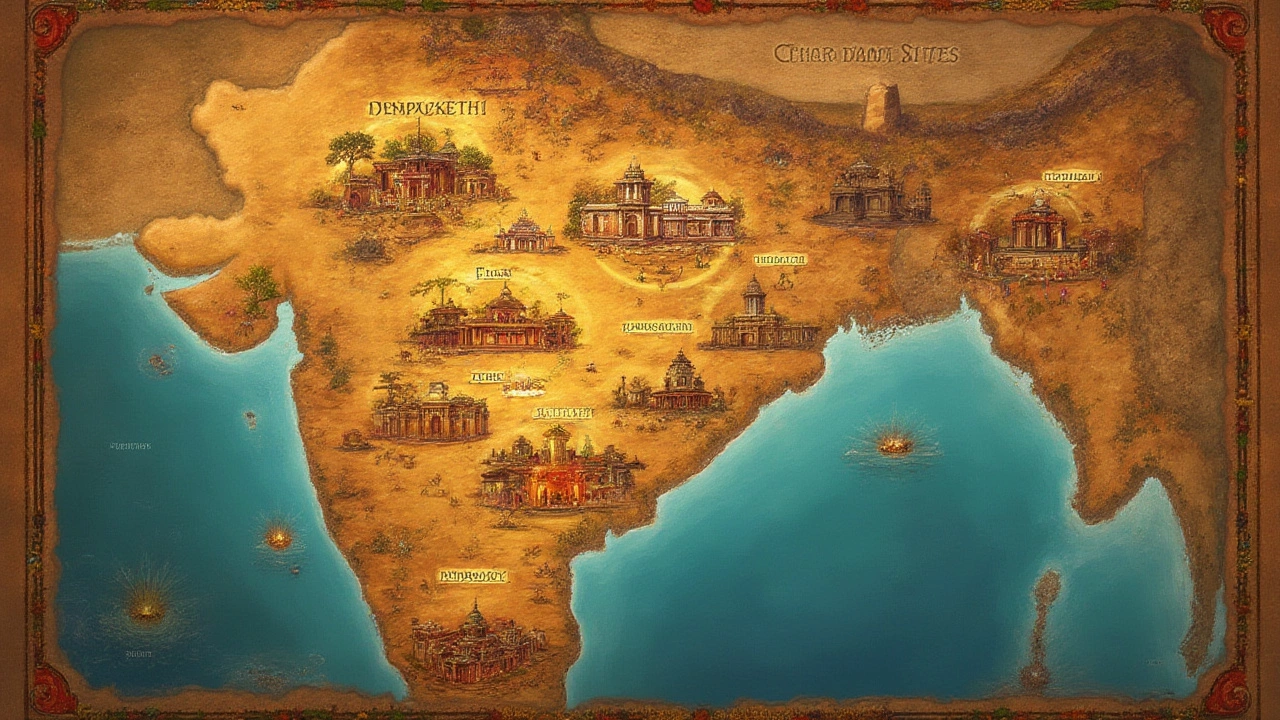
Ever wondered why Kedarnath isn't included in the famous Char Dham? Here's the real story explaining the difference between Char Dham and Chota Char Dham in India.
When planning a spiritual trek through the Himalayas, Uttarakhand temples, the revered shrines scattered across the Indian state of Uttarakhand, draw countless pilgrims each year. Also known as the Himalayan pilgrimage sites, they blend mythology, natural beauty, and ancient architecture. Kedarnath Temple, a stone sanctuary dedicated to Lord Shiva perched at 3,583 m and Badrinath Temple, the glimmering Vishnu shrine on the banks of the Alaknanda River are the crown jewels of the Char Dham, the four‑fold pilgrimage circuit that also includes Gangotri and Yamunotri. The Garhwal Region, the cultural heartland surrounding these sites provides the logistical framework—roads, hotels, and local guides—that make the journey possible.
The Uttarakhand temples ecosystem is more than a list of holy buildings; it’s a living network where geography, devotion, and history intersect. For example, the Char Dham pilgrimage encompasses the four major temples, shaping seasonal travel patterns and local economies. Visiting Kedarnath requires proper acclimatization and a trek of 16 km, while Badrinath is accessible by road but still demands respect for its high‑altitude climate. The Garhwal Region influences everything from the style of temple architecture—stone slabs, sloping roofs—to the traditional pilgrim attire that helps travelers cope with cold winds.
Whether you’re a devout pilgrim, a history buff, or an adventure seeker, these temples offer a slice of India that’s hard to find elsewhere. The mythology behind Kedarnath links directly to the Mahabharata’s Pandavas, giving the trek a narrative backbone that turns a tough hike into a story‑driven quest. Badrinath’s legend ties to Sage Narada’s request to the gods, adding a layer of spiritual intrigue that appeals to curious minds. Beyond the myths, the Char Dham circuit requires logistical planning—permits, weather checks, and physical preparation—making it a valuable case study in responsible travel.
Practical tips also flow from the temple network. The best window for Kedarnath is late May to early October, when snow has melted enough for safe passage. Badrinath, meanwhile, opens in late April and stays accessible until November, thanks to the Alaknanda’s milder micro‑climate. Accommodations in the Garhwal Region range from basic dharamshalas to comfortable hotels, giving travelers flexibility based on budget and comfort level. Local customs—like removing shoes before entering the sanctum and offering a simple garland—are easy to follow but deepen the respect you show to the site.
Another often‑overlooked angle is the environmental stewardship tied to these sites. The Char Dham pilgrimage has spurred clean‑energy projects, waste‑management initiatives, and community‑led conservation efforts in the Garhwal Region. Understanding how tourism impacts the fragile alpine ecosystem helps visitors become more mindful and support sustainable practices.
All these pieces—mythology, geography, logistics, and sustainability—come together to make Uttarakhand temples a rich, multi‑layered experience. Below you’ll find a curated list of articles that dive deeper into specific temples, travel hacks, safety advice, and cultural insights. Whether you’re mapping out a full Char Dham pilgrimage or just curious about the heritage of Kedarnath and Badrinath, the collection below provides practical knowledge you can apply right away.

Ever wondered why Kedarnath isn't included in the famous Char Dham? Here's the real story explaining the difference between Char Dham and Chota Char Dham in India.